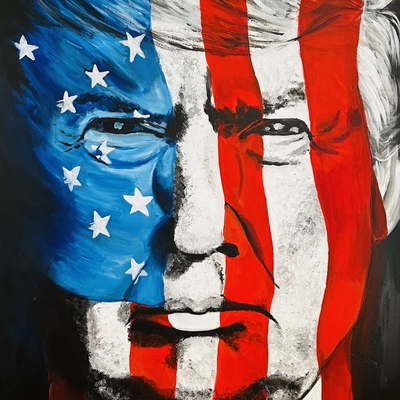Stay informed on the latest Truth Social posts from Donald Trump (@realDonaldTrump) without the doomscrolling. Consider it a public service for your mental health. (Why?)
- The U.S. conducts very little business with India, while India conducts a tremendous amount of business with the U.S.
- India sells massive amounts of goods to the U.S., making the U.S. India's biggest 'client'.
- The trade relationship has been entirely one-sided for many decades.
- India has historically charged the highest tariffs of any country, preventing U.S. businesses from selling into India.
- India buys most of its oil and military products from Russia, with very little coming from the U.S.
- India has now offered to cut its tariffs to nothing.
- India's offer to cut tariffs is 'getting late' and should have occurred years ago.
The post discusses trade policy, specifically tariffs between the U.S. and India, and India's purchasing of oil and military products. It highlights a potential shift in India's tariff policy ('offered to cut their Tariffs to nothing'), which could affect companies involved in international trade and specific sectors such as manufacturing and defense. The strong rhetoric about a 'one sided disaster' and 'getting late' could signal future trade renegotiations or policy actions, influencing market sentiment towards companies with exposure to these markets.
The post focuses on trade relationships, tariffs, and purchasing of military products, but does not contain explicit threats, ultimatums, or direct calls for military action. It highlights a perceived economic imbalance and India's preference for Russian military goods, which could be a point of diplomatic tension but not a direct precursor to conflict escalation.
- Commodities: The mention of India's oil purchases from Russia could subtly influence sentiment around global oil flows or U.S. energy policy, particularly if future actions aim to shift India's import patterns. Gold (XAU) impact is likely minimal unless broader trade tensions significantly escalate. Short-Term Watchlist: Oil inventory reports, headlines on India's energy imports and U.S. foreign policy. Medium-Term Focus: Geopolitical energy strategies, long-term USD trajectory.
- Currencies (Forex): Potential for minor impact on USD/INR if trade rhetoric intensifies, or if future policy actions are implied. Broader US Dollar Index (DXY) impact is likely limited without a more significant global trade policy shift. Short-Term Watchlist: Trade-related headlines, central bank commentary. Medium-Term Focus: Bilateral trade balances, capital flows between the U.S. and India.
- Global Equities: Potential for minor, sector-specific impact on U.S. companies with significant India exposure or those in defense and energy sectors. Indian equities might react to the implications of tariff discussions. No broad global equity market driver is indicated. Short-Term Watchlist: Earnings reports of companies with international trade exposure, performance of industrial and defense sectors. Medium-Term Focus: Corporate guidance on international trade, foreign direct investment trends.
- Fixed Income (Bonds): Unlikely to have a significant direct impact on U.S. Treasury yields unless trade tensions escalate dramatically to affect global growth or inflation expectations. Flight to safety is not directly implied. Short-Term Watchlist: Macroeconomic data releases, overall risk sentiment. Medium-Term Focus: Inflation outlook, central bank policy shifts.
- Volatility / Derivatives: Low direct impact. The VIX is unlikely to spike significantly based solely on this post, unless it is a precursor to major, aggressive trade policy changes that heighten systemic risk. Short-Term Watchlist: Overall market sentiment indicators, VIX levels. Medium-Term Focus: Macroeconomic policy uncertainty.
- Crypto / Digital Assets: Very low direct impact. Bitcoin (BTC) typically reacts to broader macro liquidity, risk sentiment, or regulatory news, none of which are directly addressed here. Short-Term Watchlist: BTC/USD price action, correlation to tech stocks. Medium-Term Focus: Regulatory developments, global macro liquidity.
- Cross-Asset Correlations and Systemic Risk: Low systemic risk. This post primarily concerns a bilateral trade relationship and does not suggest imminent systemic financial stress or breakdowns in normal correlations. Short-Term Watchlist: Broader market sentiment indicators. Medium-Term Focus: Global trade policy shifts, supply chain resilience.
- Retail Sentiment / Market Psychology: Limited potential for broad retail speculation. The post could generate discussion among retail investors interested in specific U.S. or Indian companies, or general trade policy, but it is unlikely to trigger widespread retail-driven market phenomena. Short-Term Watchlist: Social media trends around trade, mentions of specific companies. Medium-Term Focus: Influence of geopolitical rhetoric on investment themes.

